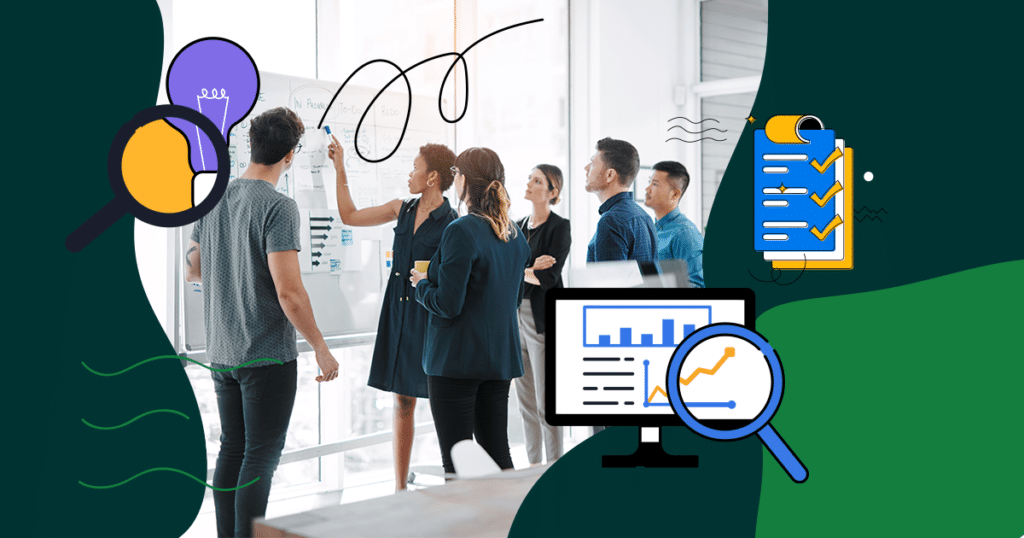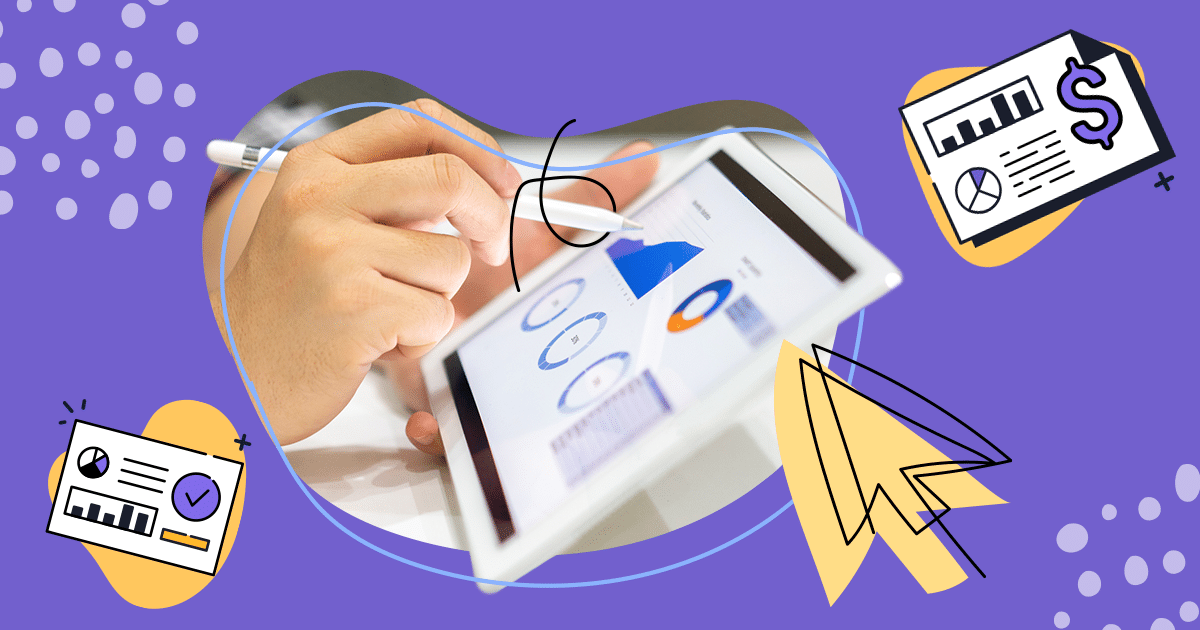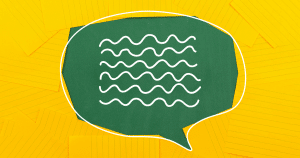The primary goal of a digital marketing strategy is to figure out how to drive traffic to your website and convert leads into customers.
Although there are tons of marketing methods, content marketing is especially effective because it draws visitors better than other traditional sales tactics.
However, it’s not enough to just produce content – you also have to know what to do with these leads once they come to your site.
That’s where a content pipeline comes in.
A content pipeline allows your marketing and sales teams to nurture leads and understand their journey from prospect to customer.
It also allows you to focus on content pieces that gain the most traction, so you can always move the needle forward.
So, with that in mind, let’s take a closer look at content pipelines, including how they work and how to utilize them to your advantage.
What are Pipelines in Marketing?
A pipeline is a structure that’s focused solely on lead conversion. Once you have a sustainable lead generation strategy, the goal is to move as many leads through the pipeline as possible and hopefully convert most of those leads into customers.
Realistically, you’ll need multiple pipelines to appeal to different demographics.
Often, a single pipeline centers around a specific persona or demographic. This way, you can create multiple content pieces to fit into the pipeline and move leads through one by one.
If you’re trying to move different types of leads through the same pipline, you’ll experience a much higher churn rate (losing leads).
What is a Content Pipeline?
While marketing pipelines are designed to convert leads into customers, a content pipeline is designed to turn marketing ideas into reality.
So, the different stages of a content pipeline are benchmarks for creating individual pieces.
Once an idea goes all the way through the pipeline, you should be able to use the final product immediately to promote your brand.
As we’ll discuss later, the three primary stages of a content pipeline are preparation, production, and publication.
Some ideas may be able to get fast-tracked through the pipeline, while others might get stuck at a specific stage. For example, let’s say you want to shoot some video content, but you need to wait for a script or a camera operator to get it finished.
What is the Purpose of a Pipeline?
The main reason to develop and utilize pipelines within your business is to keep track of progress and maintain momentum.
Without a pipeline with specific, achievable goals, it’s easy to lose focus and start treading water.
A pipeline gives you a visual representation of where a person is at in the conversion process and whether they can be moved forward or if they need to be dropped.
When talking about a content pipeline, you can see all the various ideas in production and decide which ones are a priority and which ones can wait a while to come to fruition.
Another advantage of using marketing and sales pipelines is that it’s easier to spot problems and adjust them as necessary.
For example, if you notice that most of your leads churn at a specific point, you can figure out what’s going wrong and make corrections to “plug the leak.”
What is a Pipeline Strategy?
A pipeline strategy is a comprehensive guide to what you want the pipeline to achieve and the methods and processes necessary to reach that goal.
You should develop a strategy for every pipeline you want to have so that you can be sure you’re not missing any elements.
Some core components of a pipeline strategy include:
Audience
One of the most valuable questions to ask when creating a pipeline is, “who is this for?” The more you can understand your target demographic, the easier it is to move them to the next stage.
The second question to ask is, “why is this valuable for my target audience?”
You must answer these questions at every stage of the pipeline to ensure that you can maintain momentum.
Otherwise, the pipeline could veer off onto a tangent, and you’ll lose lots of leads where it breaks off the main line.
Another way to look at these stages is to ask why a lead doesn’t convert to a customer right now.
What’s holding them back, and how can you address those concerns?
For example, perhaps a lead doesn’t have a pressing need for your products or services at the moment. In this case, the best thing you can do is maintain that connection so that when the need does arise, they have a clear line of communication with your company.
When developing your pipeline strategy, you should view each interaction from your audience’s perspective. This way, you can make sure they don’t feel rushed or pressured into moving to the next stage.
Ideally, the individual will be the one asking for more information or content, so you can simply send the materials as necessary.
Messaging
Knowing your audience is one thing – speaking to them directly is another.
Overall, the messaging should stay consistent throughout the pipeline.
For example, if you’re selling your leads on the cost-effectiveness of your product, each touchpoint along the pipeline should reinforce that benefit.
If you decide to switch to another marketing tactic (i.e. this product is so fulfilling) partway through, it can feel disjointed and, to be honest, desperate.
If necessary, you may have to create unique pipelines for each marketing message to ensure a cohesive structure.
Then, the goal will be to qualify your leads as much as possible so you know what features and benefits they value most and put them in the right pipeline accordingly.
Overall, the message should resonate with your leads and compel them to move forward. Even if they’re not ready to buy, they won’t want to lose the connection.
Content Pieces
Although a content pipeline is different than a marketing or sales pipeline, you’ll still need individual content pieces for each.
Some examples can include slide decks, pitch presentations, product demonstrations, pamphlets, photos, infographics, and more.
When developing your strategy, you should know which pieces are necessary for each stage of the pipeline.
In the beginning, you’ll likely need more salesy marketing materials to hook your leads and keep them interested.
Then, as they move through the pipeline, you can dive deeper into their pain points and how your product or service will alleviate those problems.
Also, keep in mind that you can put prospects into a pipeline, even if you don’t have all of the content ready to go right away.
Your marketing or sales team can fill in any gaps until you have everything dialed in. From there, you can automate most of the process, so your team mostly has to focus on customer interactions, not conversions.
What is the Difference Between a Pipeline and a Funnel?
Typically, people conflate pipelines and tunnels because they follow similar pathways and may overlap with identical touchpoints. However, the difference is in the perspective.
A funnel focuses on the customer’s journey and the reasons why they move from one point to the next. A pipeline is from the sales team’s perspective, showing them the actions they need to take at each stage to move a lead to the next section.
So, while funnels and pipelines follow the same path, they’re from two unique viewpoints. However, both pieces are crucial for ensuring a high conversion rate.
Ideally, you should create a customer funnel first and then reverse engineer a pipeline afterward.
This method works well because you can deliver content and messaging based on what the customer is feeling or experiencing.
Essentially, you want to reach out at the right place at the right time to either move the needle or convert the lead immediately.
Here’s a quick example to illustrate the difference between the two:
Marketing Funnel
- Stage One: Awareness – A working professional with young kids sees an ad for your product on Facebook and clicks a link to go to a landing page. They see a product that looks interesting, and they sign up for a mailing list to receive discounts.
- Stage Two: Consideration – The lead receives regular emails from the company, talking about the product and other similar items that they might enjoy. The holidays are coming up, and the lead is looking for gift ideas.
- Stage Three: Conversion – The individual decides to purchase the product because of a holiday discount coupon, and they’re thrilled with it.
- Stage Four: Loyalty – The customer comes back to the company whenever there’s a sale to buy other products for their kids.
Marketing Pipeline
- Stage One: Lead Generation – Your team receives a new lead from a landing page link on a social media post. Automated software sends a welcome email with a limited-time offer to purchase the product listed in the post.
- Stage Two: Lead Qualification – New leads are sorted into categories based on their interactions with your emails. Each category is based on a specific product or emotion.
- Stage Three: Lead Nurturing – Once leads are categorized, the marketing and sales teams can reach out with new materials and offers. Perhaps you send some video content via email, or maybe you send some unique discount codes.
- Stage Four: Lead Conversion – Once a lead finally buys a product, they’re moved into another category for retargeting and customer marketing. The goal is to keep the individual coming back for more.
- Stage Five: Customer Loyalty – Perhaps you’ve developed a loyalty program that allows customers to bank points or earn special discounts. You want to keep reaching out to ensure they’ll buy from your business again and again.
As you can see, there are significant overlaps with each system. Also, you’ll have specific actions and content pieces to develop at each stage of both the funnel and the pipeline.
What are the 3 P’s of the Content Pipeline Process
The three P’s of the content pipeline process are preparation, production, and publication. Here’s an overview of each section.
Preparation
This is the most important aspect of your content pipeline as it ensures you’re making the best decisions possible for your bottom line. During this stage, you should focus on answering these questions:
- Who is this content for?
- Where does it fit in with the marketing or sales pipeline?
- What is the goal of this content? (i.e., the call to action)
- What tools and resources are necessary to produce this content?
- How soon do you need this content? Is it a priority?
- What channels or platforms will we use to publish this content?
Once you answer all of these questions, you can move to the next phase.
Production
Depending on the situation, content production can be fast and efficient or lengthy and complex. For example, blog posts are often pretty easy to produce, but video clips and infographics require more people and resources.
Also, consider who needs to be involved in the production process.
If you’re using a marketing budget, does the piece need approval? Are there strict limitations regarding what you can or can’t say in the piece? Do you need to use sensitivity readers to double-check your content before publication?
Each type of content should have its own production and approval schedule. Then, once a piece is polished and ready to go, it can move to the next part of the pipeline.
Publication
Before publishing your content, you should know where it’s going and what kind of impact it will have.
For example, some pieces may be for the sales team to use in their own pipelines. Other content may be used for social media, or it might be best to publish on your own website.
Publishing is just as crucial as each other step because it determines whether your content will be useful or not.
For example, if you publish at the wrong time, the piece may not get noticed, so you won’t be able to reach your metric goals.
Also, keep in mind that you may have to refine your publication process based on user data and feedback.
If you don’t get it right immediately, you can always re-publish a piece to achieve your goals later.
Get Better Pipeline Content With WriterAccess!
Because content marketing is so valuable for your business, you want to rely on top-tier content producers.
WriterAccess can connect you with a vast pool of talented writers that can make blog posts, landing pages, and even social media posts for your content pipeline.
Get a free two-week trial and see how Rock Content and WriterAccess can supercharge your pipeline marketing strategy.
2024 State of Marketing Report
Your golden ticket to crush your goals with data-driven insights!
2024 State of Marketing Report
Your golden ticket to crush your goals with data-driven insights!

![[Rock NA] State of Marketing Reports 2024 – Comkt Hubspot State of Marketing Report 2024](https://rockcontent.com/wp-content/uploads/2022/07/Banner-Fino-Rock-Convert-2500-%C3%97-500-px-19.png)
![[WA] Ultimate Content Marketing Kit](https://rockcontent.com/wp-content/uploads/2022/08/Content-Marketing-Kit-750x200px.jpg)







